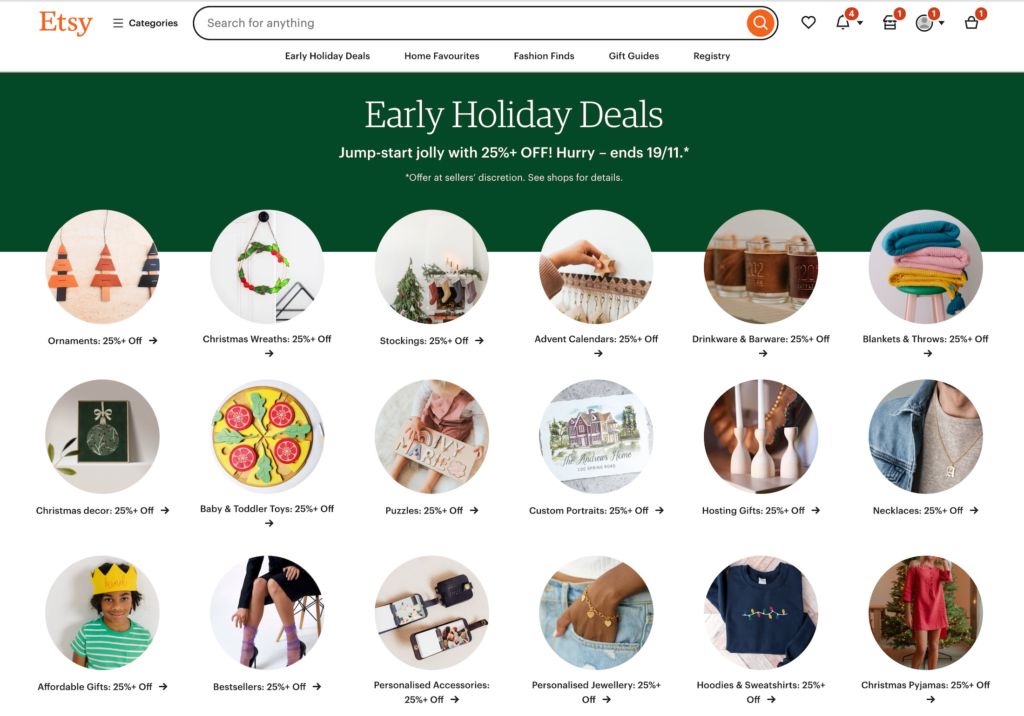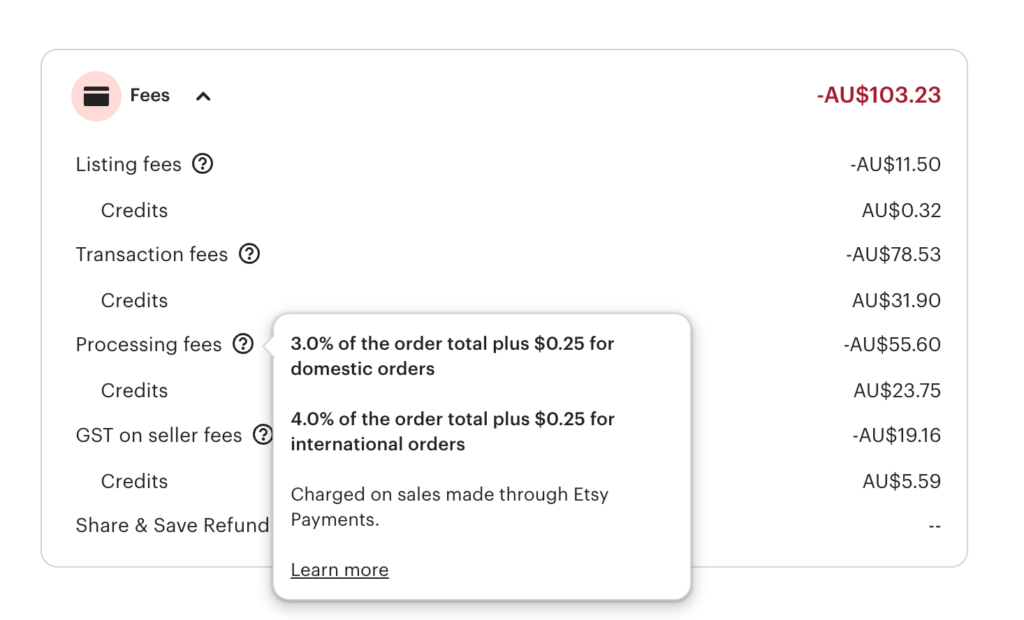Demystifying Etsy Fees in 2023: How Much Does Etsy Charge?

Understanding Etsy Fees: A Comprehensive Guide
Etsy has become a popular platform for sellers to showcase their unique handmade products and vintage items. However, it's important to understand the various fees that Etsy charges, as they can significantly impact your profit if not managed properly.
When selling on Etsy, you'll encounter different types of fees that contribute to the overall costs. These include listing fees, transaction fees, payment processing fees, subscription fees, in-person selling fees, pattern fees, currency conversion fees, regulatory operating fees, and Etsy ads fees. Each fee serves a specific purpose and is essential for maintaining the platform's functionality.
For most sellers, Etsy fees make up approximately 20% of the total costs. This means that understanding and managing these fees effectively is crucial for maximizing profitability.

Breaking Down Etsy Fees: What Sellers Need to Know
Understanding the Different Types of Etsy Fees
To effectively manage your Etsy fees, it's important to understand the different types of fees that you may encounter as a seller on the platform. Here are some key fees to be aware of:
- Listing fees: When you list an item on Etsy, there is a flat fee of $0.20 per product. This fee helps cover the cost of maintaining the platform and ensuring that your listings reach potential buyers.
- Transaction fees: Etsy charges a transaction fee of 6.5% on the total amount you earn from each sale, including the item price, shipping costs, and even gift wrapping. This fee contributes to the overall operational expenses of running the marketplace.
- Payment processing fees: When customers make a purchase on Etsy, they have various payment options available, such as credit cards, debit/bank cards, Etsy gift cards, PayPal, Apple Pay, and Google Pay. Each payment method may have its own associated processing fee based on your region.
- Subscription fees: While there is a free Standard Plan available for sellers on Etsy, there is also an optional Plus Plan that comes with additional features and benefits at a cost. The subscription fee for the Plus Plan can vary depending on your business needs.

In addition to these primary fees, there are also other charges that sellers should be aware of:
- In-person selling fees: If you sell your products in person at craft shows or markets using Etsy's Point-of-Sale system, there may be additional fees involved.
- Pattern fees: If you choose to use Etsy's Pattern service to create your own standalone website powered by Etsy, there will be monthly subscription fees associated with this feature.
- Currency conversion fees: If you sell internationally and receive payments in different currencies than your bank account, there may be currency conversion fees involved.
- Regulatory operating fees: In some regions, Etsy may charge additional fees to comply with local regulations and tax requirements.
- Etsy ads fees: If you choose to promote your listings using Etsy Ads, there may be advertising fees associated with this service.
Strategies to Offset Etsy Fees
Managing Etsy fees effectively can help maximize your profitability as a seller. Here are some strategies to consider:
- Increasing prices: Adjusting your prices slightly can help cover the cost of Etsy fees without significantly impacting your customers' purchasing decisions.
- Listing prices in the same currency: Aligning your listing prices with the currency of your bank account can help minimize currency conversion fees and simplify financial transactions.
- Cutting down costs: Look for ways to reduce expenses in your business operations, such as optimizing packaging materials or finding more affordable shipping options. Every cost-saving measure can contribute to offsetting Etsy fees.
- Exploring alternatives: While Etsy is a popular platform, it's worth considering other marketplaces like Square Online, Shopify, or Redbubble. These platforms may have different fee structures that could potentially offer better profitability for your specific business model.
Evaluating the Worth of Selling on Etsy
As an Etsy seller, it's important to evaluate the overall worth of selling on the platform. Consider these factors when weighing the pros and cons:
- Historical fee increases: Analyze the consistent rise in Etsy fees over time and assess how it has impacted sellers' profitability. Understanding these trends can help you make informed decisions about pricing and managing expenses.
- Comparing profitability: Compare the potential profitability of selling on Etsy against other marketplaces. Take into account factors such as audience reach, competition level, and fee structures to determine which platform aligns best with your business goals.
- Accessibility and convenience: One advantage of selling on Etsy is the wide reach and customer base it offers. The platform provides an easy-to-use interface and a built-in audience, making it convenient for setting up a print-on-demand store or showcasing your unique handmade products.
By understanding the different types of Etsy fees, implementing strategies to offset those fees, and evaluating the worth of selling on Etsy compared to other marketplaces, you can navigate the world of Etsy fees more effectively and maximize your profitability as a seller.
Calculating the Impact on Your Profit
To understand how these fees impact your profit margin as an Etsy seller, it's essential to consider them in relation to your total revenue. Let's take a look at how you can calculate the impact of Etsy fees:
- Case study: Analyze a specific sale and calculate the percentage of profit affected by Etsy fees. This will give you a clear understanding of how much these fees eat into your earnings.
- Calculating the total fees per sale: Factor in the different types of fees and their rates to determine the total amount that Etsy takes from each sale. This will help you accurately assess your profitability.
- Strategies to maximize profit: Adjusting your pricing strategy and managing expenses can help offset Etsy fees. Consider implementing strategies such as adjusting prices slightly, finding cost-saving measures, or exploring alternative platforms to increase your overall profitability.
By understanding the total Etsy fees and calculating their impact on your profit, you can make informed decisions about pricing, expenses, and overall business strategies to maximize your earnings as an Etsy seller.
Financial Pros and Cons of Selling on Etsy Marketplace
Advantages of Selling on Etsy
Selling on Etsy comes with several financial advantages that make it an attractive platform for artisans, crafters, and small business owners:
- Wide reach and customer base: Etsy provides sellers with access to a large and diverse customer base. With 96.34 million monthly buyers in 2022, there is significant potential for exposure and sales. This wide reach can help sellers expand their customer base beyond what they might achieve through their own standalone websites or local markets.
- Ease of setup and management: Setting up a shop on Etsy is relatively straightforward, even for those without extensive technical knowledge. The platform offers a user-friendly interface and tools that simplify the process of listing products, managing inventory, and processing orders. This ease of use allows sellers to focus more on their craft or product development rather than getting bogged down by complex website management.
- Print-on-demand opportunities: Etsy has embraced the print-on-demand model, allowing sellers to offer customizable products without the need for upfront inventory investment. This accessibility makes it easier for artists and designers to showcase their work through various mediums like apparel, home decor, or accessories. By leveraging print-on-demand services integrated with Etsy, sellers can tap into new revenue streams with minimal financial risk.
Disadvantages of Selling on Etsy
While there are many advantages to selling on Etsy, it's important to consider the potential drawbacks as well:
- Increasing fees: One notable disadvantage is the consistent rise in Etsy fees over time. As fees increase, they can eat into sellers' profit margins. It's crucial for sellers to factor these fees into their pricing strategies to ensure profitability remains sustainable.
- Competition and saturation: With millions of active sellers on Etsy, competition can be fierce in certain niches. Standing out among a large number of sellers requires strategic marketing, unique product offerings, and exceptional customer service. It may take time and effort to build a loyal customer base and establish a strong brand presence.
- Limited customization options: While Etsy provides some flexibility for sellers to showcase their brand personality, there are limitations on store design and branding. Sellers must adhere to Etsy's guidelines, which can restrict the level of customization available. This limitation may impact a seller's ability to create a fully immersive and unique shopping experience for their customers.
Despite these disadvantages, many sellers find that the advantages of selling on Etsy outweigh the challenges. By leveraging the platform's wide reach, user-friendly interface, and print-on-demand opportunities while carefully managing fees and competition, sellers can navigate the financial landscape of Etsy successfully.
Navigating Etsy Fees: Maximizing Profitability as a Seller
Understanding and managing Etsy fees is essential for maximizing profitability as a seller on the platform. By implementing effective strategies, sellers can navigate these fees and optimize their earnings. Here are key takeaways to help you navigate Etsy fees:
- Understanding the different types of Etsy fees: Familiarize yourself with the various fees that Etsy charges, including listing fees, transaction fees, payment processing fees, subscription fees, and additional charges like in-person selling fees or pattern fees. This knowledge will enable you to accurately calculate your costs and make informed pricing decisions.
- Implementing strategies to offset Etsy fees: Adjusting prices slightly, listing prices in the same currency as your bank account, cutting down costs through efficient operations, and exploring alternative platforms are all strategies that can help offset Etsy fees and improve profitability.
- Evaluating the financial pros and cons of selling on Etsy: Consider the advantages of wide reach and customer base, ease of setup and management, and print-on-demand opportunities offered by Etsy. However, also weigh the impact of increasing fees, competition saturation, and limited customization options when evaluating whether selling on Etsy is the right choice for your business.
By understanding the impact of different types of Etsy fees on your profit margin, implementing effective strategies to offset those fees, and carefully evaluating the financial pros and cons of selling on Etsy compared to other marketplaces, you can navigate the world of Etsy fees successfully while maximizing your profitability as a seller.
Remember to regularly review your pricing strategy and expenses to ensure ongoing financial success on the platform.





